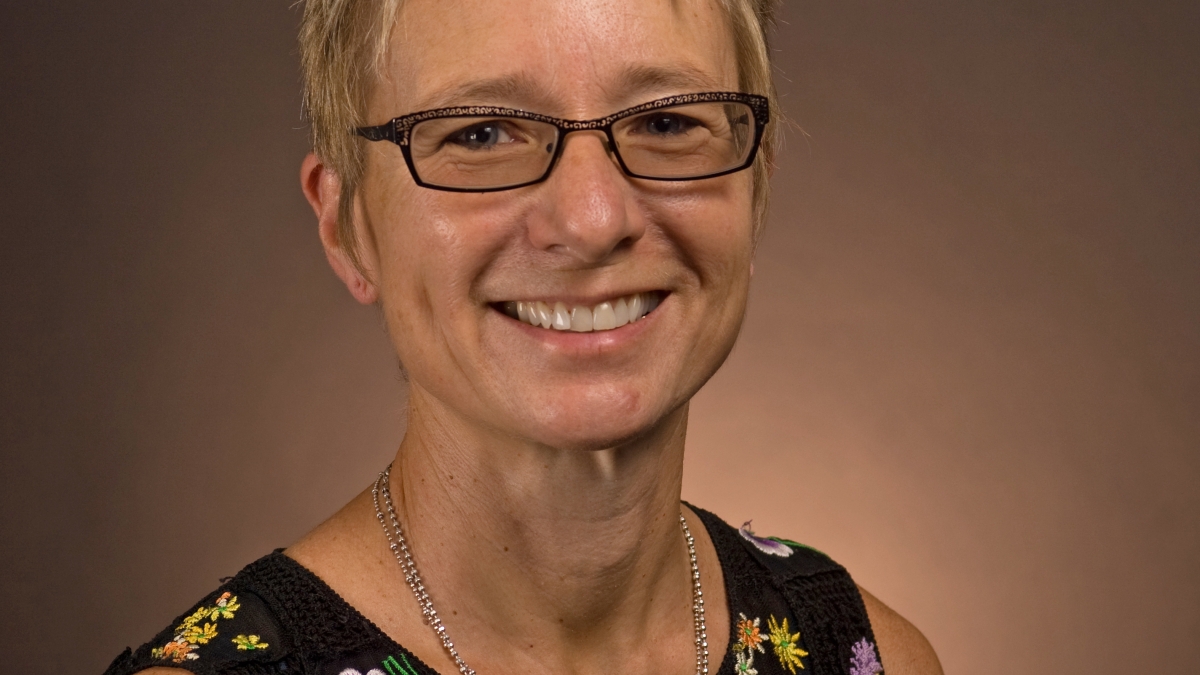ASU philosophy professor tackles sexual harassment on behalf of her discipline

ASU philosophy professor Cheshire Calhoun is also the chair of the American Philosophical Association. In that role she was integral in writing an open letter to victims of sexual harassment in philosophy departments around the country.
Cheshire Calhoun has heard the stories.
Her area of study – philosophy, in which she has had her doctorate for more than 30 years – has recently been the subject of stories about sexual harassment by male academics targeting female students and subordinates. It appears to be happening all across the country. There have even been entire blogs dedicated to what it’s like to be a female philosopher at the nation’s universities.
But Calhoun, a professor in the School of Historical, Philosophical and Religious Studies at ASU, is in a position to do something to fix the problem. In addition to her post in Tempe, Calhoun is the chair of the board of officers of the American Philosophical Association (APA). The organization, a professional group for philosophy academics, sent an open letter to its community June 16 to address the problem.
Calhoun discussed the problem with ASU News, and what she and her team hope to achieve.
Question: Why do you think philosophy departments have this problem? Is there something about philosophy, or is this happening in other disciplines?
Answer: There is no comparative study that I know of of the relative incidence of sexual harassment in philosophy versus other disciplines. As a discipline, however, philosophy has had persistently low numbers of women – around 21 to 25 percent. While the low number of women in philosophy is likely to be mostly due to the fact that undergraduate women do not choose to major in philosophy – about 33 percent do, although they take intro philosophy courses about the same rate that male students do – the fact of gender balance in the profession may contribute to the incidence of sexual harassment. The perception that philosophy has a distinctive problem with sexual harassment is largely a result of a number of high-profile cases that have been in the news recently and discussed on blogs.
Q: What do you hope will be the outcome of the letter the APA published?
A: My first hope is that victims of sexual harassment will feel that their professional association takes seriously the long-term impact that sexual harassment has on their lives and their capacity to participate in the profession. My second hope is that members of the profession will, if they are positioned to do so, offer support to victims of sexual harassment, and that everyone will become more aware of the importance of being informed about what kinds of behaviors count as sexual harassment and what bystanders may and should do. I also hope that departments will implement some of the best practices recommended by the APA task force on sexual harassment.
It is too early to guess what the impact will be. I do know that some victims have been deeply appreciative of the open letter and others have felt that the APA should take a stronger stance, instituting sanctioning measures of its own.
Q: Critics say you aren’t going far enough to address this problem. What are the limitations of the APA getting involved?
A: All professional societies face limitations on what they can do in response to sexual harassment. Professional societies do not have the fact-finding capabilities to investigate allegations of sexual harassment or to confirm the factual basis of sexual-harassment determinations at academic institutions. So we are all in the same boat. The APA has taken a number of important steps. We have had a statement on sexual harassment since 1993 that was revised in 2013. We have an excellent best-practices statement.
The APA Committee on the Status of Women offers to departments a site-visit program that is aimed at helping departments to assess and determine ways of improving the climate for women. It is modeled on the site-visit program that the natural sciences have. The APA also has an ombudsperson for nondiscrimination (I served a three-year term as the APA ombudsperson before becoming board chair). Some victims of sexual harassment have communicated their situations and concerns to the ombudsperson, who is available to provide advice to victims of sexual harassment. So the open letter is simply the most recent of a series of APA efforts.
Q: How will you measure the success of your efforts?
A: We have been closely watching blog discussions and have received some personal correspondence in response to the letter. One measure of success would be an increased number of departments availing themselves of the APA Committee on the Status of Women's site-visit program.
Q: What do universities as a whole need to be doing to bring the problem of sexual harassment under control?
A: My impression is that there is considerable variation across institutions in the sexual-harassment training, including bystander training, that is offered to faculty. It would be useful to include all graduate students, and not just faculty, in that training.
Academic departments can take the measures recommended in our best-practices report. Those include publicizing links to university policies and grievance procedures and to the Title IX officer on department websites; inviting a site visit if their discipline offers that opportunity; hold bystander training for the department; scheduling discussion of sexual harassment as part of new faculty orientation and graduate student orientation; and increasing awareness about factors that contribute to an unwelcoming climate for women and other vulnerable groups.